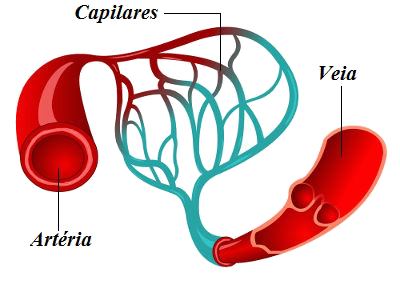THE tuberculosis is an infectious disease caused by a bacterium. It mainly affects thethe lungs, but other organs can also be affected. Its transmission occurs from one person to another through droplets expelled by the patient when talking, sneezing or coughing.
There is a cure for this disease, as long as the patient undergoes the complete treatment, following the medical recommendations. Currently all treatment is made available free of charge by the Unified Health System (SUS).
Read too: Lung: one of the main organs of the respiratory system
What is tuberculosis?
Tuberculosis is a contagious disease caused by a bacteria known as Koch's bacillus or Mycobacterium tuberculosis. Koch's bacillus received this name in honor of Robert Koch, who was the one who identified the causative agent of tuberculosis in 1882. The bacteria mainly affect the lungs, but can infect other organs such as kidneys and bones. we call Pulmonary Tuberculosis the one that affects the lungs and extrapulmonary one that affects other regions.

Many people consider tuberculosis a disease of the past, but it is still present in the Brazilian reality and in other parts of the world. According to the international organization Doctors Without Borders, “each year, about 1.7 million people die, while others 9.6 million suffer from the disease, mainly in developing countries”. According to the Ministry of Health, in Brazil, around 70,000 new cases and 4,500 deaths as a result of tuberculosis.
Read too:Diseases caused by bacteria
What are the symptoms of tuberculosis?
Tuberculosis has different symptoms according to the organs that are being affected. Pulmonary tuberculosis, which affects the lungs, is the most common form and stands out for causing as the main symptom the persistent dry or productive cough (with phlegm). In addition to coughing, it can trigger evening fever, night sweats, tiredness and weight loss.
It is noteworthy that most people exposed to the causative agent of tuberculosis never develop symptoms. It is estimated that about 10% of infected people only develop the active and contagious form of the disease. It is noteworthy that some people are more likely to contract this infection, which is the case of HIV-positive people, malnourished and elderly, who have a weakened immune system.
How is the transmission of tuberculosis?
Tuberculosis transmission generally occurs through the inhalation of particles containing the bacteria, which are expelled by the patient to the coughing, talking or sneezing. According to the Ministry of Health, bacteria that are present in clothes, sheets and cups, for example, are not an important form of transmission. Also according to the Ministry, the disease is not transmitted through shared objects.
An important point to be highlighted is that, as the patient undergoes his treatment, his capacity to transmit the disease decreases. After 15 days of using the drugs, transmission rates are already very low. It is believed that a patient with untreated tuberculosis can infect 10 to 15 people a year.
See too:Antibiotics - the importance of these drugs to treat bacterial diseases
How is tuberculosis diagnosed?
Tuberculosis can be diagnosed through tests bacteriological, that aim at the identification of bacteria causing tuberculosis, and imaging exams, such as a chest X-ray. The radiography allows observing the involvement of the patient's lung. After making the diagnosis, it is essential that treatment begins quickly.
How is tuberculosis treated?
tuberculosis is treated using antibiotics. When the disease does not present complications, the treatment lasts, on average, six months. All medications are distributed free of charge by SUS, and the patient is monitored from the beginning of the treatment until its cure.
People who are being treated to cure the disease must keep in mind the need to carry out the treatment by the date set by the doctor. Many, when they feel better, abandon the use of medications, which can result in the development of an even more serious situation of the disease: drug-resistant tuberculosis, which is mainly characterized by the low response to treatment.
Read too:Superbacteria - the risk of interrupting drug use before the end of treatment
How to prevent tuberculosis?
Tuberculosis can be prevented through vaccine BCG, which is applied to the child at birth or up to a maximum of 4 years, 11 months and 29 days of age. In addition to vaccination, it is important to avoid prolonged contact with patients affected by the disease, in addition to keeping the environments ventilated and with sunlight. take good care of food it is also important to have an immune system functioning properly and protecting us from infections.

World Tuberculosis Day
O World Tuberculosis Day it's March 24th. The date was created by the World Health Organization in 1982 and was chosen because this is the day on which, in 1882, the doctor Robert Koch discovered the bacillus that causes tuberculosis. This date is extremely important to make the population aware of this serious disease, which, despite being considered a health problem of the past, still kills many people across the country. world.
[Author of1]What causes tuberculosis?



